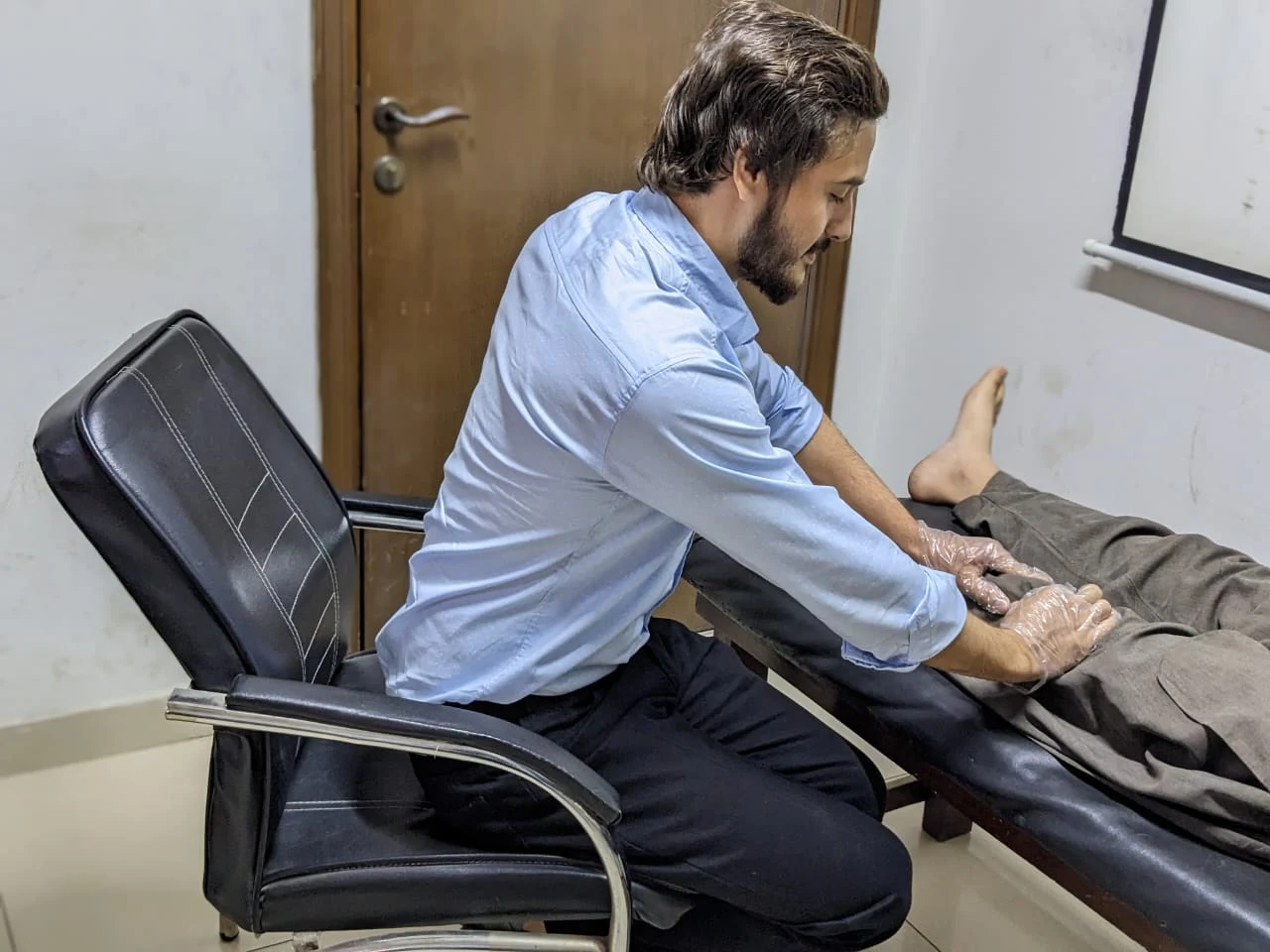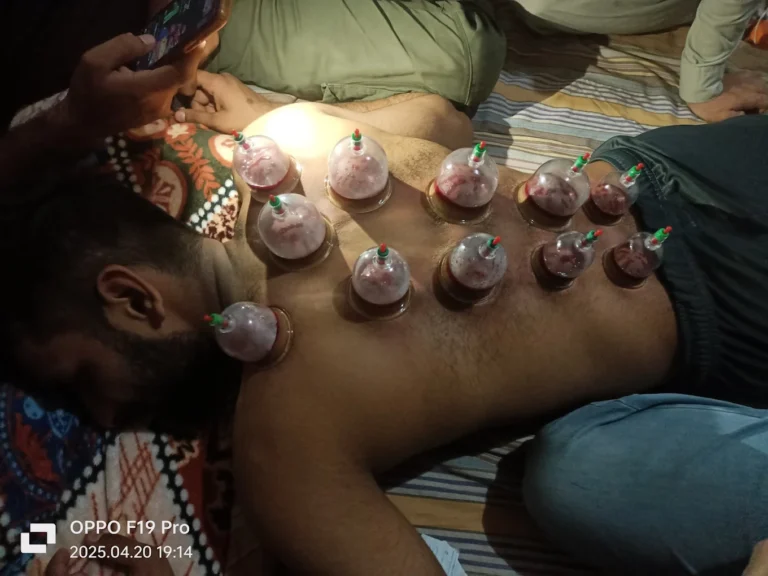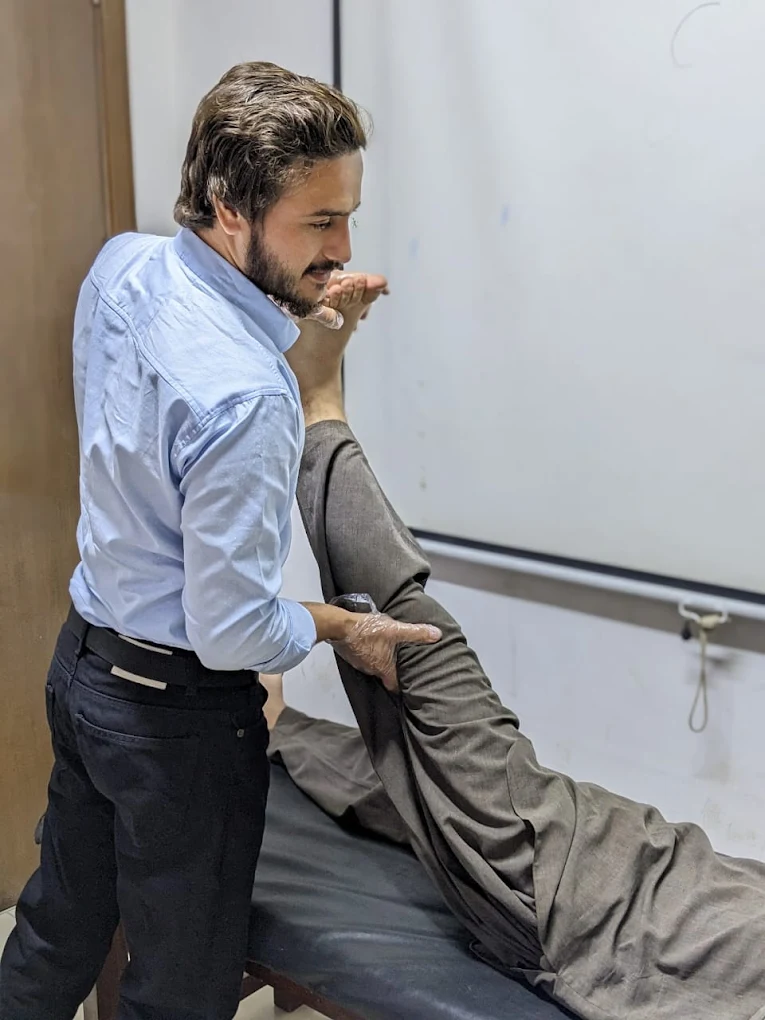
Knee pain is a common issue affecting people of all ages, from athletes to older adults. Whether caused by injury, arthritis, or overuse, physiotherapy offers a proven, non-invasive approach to alleviating pain, restoring mobility, and preventing future problems.
In this blog, we’ll explore:
- Common causes of knee pain
- How physiotherapy helps
- Top physiotherapy techniques and exercises
- Recovery timelines
- Lifestyle tips for long-term knee health
Understanding Knee Pain
Common Causes of Knee Pain
Knee pain can stem from various conditions, including:
- Osteoarthritis: Wear-and-tear of cartilage, common in older adults .
- Patellofemoral Pain Syndrome (Runner’s Knee): Pain around the kneecap, often due to overuse or misalignment .
- Meniscus Tears: Damage to the knee’s shock-absorbing cartilage, often from twisting injuries .
- Ligament Injuries (e.g., ACL tears): Common in athletes, causing instability and swelling .
- Tendonitis (e.g., Jumper’s Knee): Inflammation of the patellar tendon from repetitive stress .
- Bursitis: Inflammation of fluid-filled sacs cushioning the knee joint .
Symptoms
- Pain (sharp, dull, or throbbing)
- Swelling or stiffness
- Clicking or popping sounds
- Weakness or instability
How Physiotherapy Helps
Physiotherapy addresses the root cause of knee pain through:
1. Pain Relief Techniques
- Manual Therapy: Hands-on techniques to improve joint mobility and reduce stiffness .
- Dry Needling/IMS: Targets muscle tightness and nerve-related pain .
- Heat/Ice Therapy: Reduces inflammation and relaxes muscles .
2. Strengthening & Stretching
A personalized exercise plan focuses on:
- Quadriceps & Hamstrings: Key muscles supporting the knee .
- Hip & Core Stability: Weak hips can contribute to knee strain .
- Flexibility: Stretching tight muscles (e.g., IT band, calves) to reduce pressure on the knee .
3. Posture & Movement Correction
- Guidance on proper walking, running, and lifting techniques to avoid compensations .
- Ergonomic adjustments for work or sports .
4. Preventing Recurrence
- Education on long-term joint care and injury prevention .
Top Physiotherapy Exercises for Knee Pain
Here are 5 evidence-based exercises recommended by physiotherapists :
1. Straight Leg Raises
- How to do it: Lie on your back, lift one leg while keeping it straight, hold for 5 seconds, and lower.
- Benefits: Strengthens quadriceps without joint stress.
2. Clamshells
- How to do it: Lie on your side, knees bent, lift the top knee while keeping feet together.
- Benefits: Strengthens glutes and hips to stabilize the knee.
3. Hamstring Stretch
- How to do it: Lie on your back, loop a towel around your foot, and gently pull the leg upward.
- Benefits: Relieves tension behind the knee.
4. Mini Squats
- How to do it: Lower into a shallow squat (knees behind toes), then rise slowly.
- Benefits: Builds strength in quads and glutes.
5. Heel & Calf Stretch
- How to do it: Lean against a wall, stretch one leg back, and press the heel down.
- Benefits: Reduces strain on the knee during walking.
(Note: Always consult a physiotherapist before starting new exercises.)
Recovery Timeline
- Mild cases (e.g., minor sprains): 4–6 sessions over 2–3 weeks .
- Post-surgery (e.g., ACL repair): 6–12 months of rehab .
- Chronic conditions (e.g., arthritis): Ongoing management with periodic therapy .
Lifestyle Tips for Knee Health
- Stay Active: Low-impact exercises like swimming or cycling reduce joint stress .
- Maintain a Healthy Weight: Less weight = less knee strain .
- Wear Supportive Footwear: Cushioned shoes with good arch support .
- Avoid Overuse: Modify high-impact activities (e.g., running on hard surfaces) .
When to Seek Help
Consult a physiotherapist or doctor if you experience:
- Severe pain or swelling
- Inability to bear weight
- Locking or buckling of the knee




